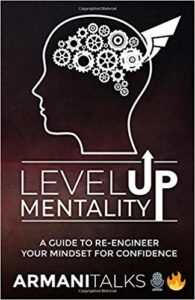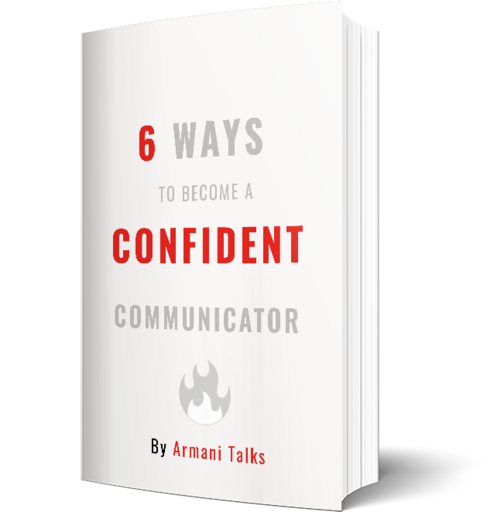How to Create Compelling Story Characters
A great story has great characters.
Great characters are relatable characters.
What makes a character relatable and how can we unlock that level of relatability in our story?
That’s the purpose of this blog.
There is no conflict without the characters.
And settings mean little if we have 0 understanding of the protagonist and antagonist.
Therefore, allow us to answer this simple question:
- How do we create compelling story characters?
The Purpose of Characters
A consumer of a story consumes the story because they see themselves in the story.
Read this line again ^.
‘Wait a minute. I’ve watched stories about fishes before, like Finding Nemo. But I’m not a fish.’
The type of character doesn’t matter.
It’s more about what the character symbolizes.
In Finding Nemo, it was more than a fish simply being lost.
- It’s a fish looking for an adventure.
- Then in the adventure, it finds a lot of friends and foes.
- Then it is reunited with its home as a changed fish.
Sound familiar?
‘Whoa, when you put it like that…I can now see myself in the fish!’
Correct.
The character in the story serves as a symbol for human experience.
And it doesn’t matter if the character is a:
- Man.
- Woman.
- Or fish.

How to Create Story Characters: Simple Way
One of the simplest ways to create story characters is by:
- Knowing how the character talks.
‘And?’
Just start off with that.
‘What value could that possibly serve??’
This is the reverse engineering method of storytelling.
Why do we talk the way that we do?
‘Uh…’
How we talk is a direct reflection of us and our story.
Our talking style represents our:
- Trials and tribulations.
- Experiences.
- Evolution.
and much more.
By understanding how a character talks, we begin to better understand the character!
And by understanding the character, it’s much easier to understand what types of conflicts the character will get into.
Traits of a Relatable Character
As you are seeing how this character talks, the understanding of the character will go from:
- 1 dimensional -> 2 dimensional.
- 2 dimensional -> 3 dimensional.
Once we know this character, there are some traits to assess.
What are some strengths and weaknesses of the character?
Both variables are needed.
If we just focus on the strengths, then there is no conflict.
Beware, the ego will try to boost the strengths a lot.
It will feel bad for trying to create weaknesses in the character.
On the other hand, if we just focus only on the weaknesses, then there is no hope.
A large reason a story unfolds the way it does is because there are themes of hope in the plot.
So, don’t get too carried away with making this character pathetic.
Having a simple understanding of the:
- Strengths and weakness are what allows the character to become relatable.
For Finding Nemo, the strength of Nemo was his sense of adventure.
While Nemo’s weakness was that he was too adventurous.
Often, the biggest strength can also be the biggest weakness of the character…
How to Plug the Character Into the Story
Thus far, we have understood:
- How the character talks.
- The strengths and weaknesses of the character.
The next question to ask is:
- What type of desire does this character have?
‘Why is desire so important?’
The reason desire is so important is because it allows for movement.
Check out any story on Netflix, fiction books, fairy tales, etc.
Often, it’s a desire that gets the action started.
Walter White from Breaking Bad had the desire to provide for his family.
Cooper from Interstellar had the desire to explore the stars and save his planet.
Jack and Rose from Titanic had the desire to explore their tabooed relationship.
In all these cases, the desire was the predecessor to the conflict.
Therefore, what is the main desire that this relatable character has?
From the desire, the conflict is born.
Unraveling the Conflict
After we figured out:
- How the character talks.
- The character’s strengths and flaws.
- The character’s desire/s.
This is when it’s smart to brainstorm.
Brainstorming is the art of throwing out ideas without any judgment.
To brainstorm, we need a target.
Also, it’s efficient to set a timer.
The target is:
- What’s the conflict that the character faces as he or she tries to bring the desire to reality?
Set a timer.
Then let your mind storm up ideas!
To brainstorm, you can mumble out ideas.
Or get a big whiteboard and just write the ideas down.
Since we centered ourselves on a relatable character, it becomes much easier to get a conflict and a lesson.
Allow the mind to fly and think of innovative conflicts.
Often, you will surprise yourself.
Assembling a Story
Did you know that Taco Bell does not consider itself a restaurant?
Their business plan considers themselves as, assemblers of tacos.
It’s because they have the individual ingredients ready.
Their main goal is to assemble those ingredients together to create the taco.
Similarly, that’s how it works with storytelling.
- We have the character.
- We have the traits that make the character relatable (strengths and weaknesses).
- An underlying desire.
- And a conflict.
Now it’s a game of assembling the story in a way where YOU would like to consume it.
‘Me?’
Yes, use yourself as the target audience.
This builds more creativity and a sense of fearlessness in unraveling an honest narrative.
Assemble the parts together and create a story for the ages.
Book to Level Up Storytelling Skills
In this blog, we learned how to create story characters.
It comes down to focusing on the first-order principles.
From simplicity, complexity is born.
Mediocre people get lost in the complexity.
While the masters fine-tune the simple acts, repeatedly.
Looking to further level up your storytelling skills?
If so, then be sure to check out:
- The Art and Science of Storytelling book.
In this book, you will learn:
- What is a story?
- How to create conflicts.
- How to pack your stories with real-world lessons.
- Practical storytelling exercises.
- How to tell stories in conversations, for brand building, and marketing.
And much more!
Grab a Copy Here:
Ebook
Paperback/Kindle
Audiobook
– ArmaniTalks 





